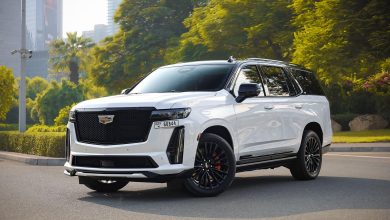How to Read a Monroney Label: Tips for First-Time Car Buyers

Understanding the Monroney label is crucial for first-time car buyers. This label, mandated by law, provides essential information about new vehicles, including pricing, features, fuel economy, and safety ratings. Named after Senator Mike Monroney, who sponsored the Automobile Information Disclosure Act of 1958, the label aims to ensure transparency and help consumers make informed purchasing decisions. By familiarizing yourself with the Monroney label, you can better compare vehicles and choose the best option for your needs.
What is a Monroney Label?
The Monroney label, also known as the window sticker or window label, is a legally mandated label that must be affixed to the window of all new cars sold in the United States. This label is named after Senator Mike Monroney, who sponsored the Automobile Information Disclosure Act of 1958, which required these labels to ensure transparency and consumer protection in the automotive market.
Key Components
MSRP
The Manufacturer’s Suggested Retail Price (MSRP) is the starting point for understanding the pricing of a new vehicle. This price is set by the manufacturer and serves as a recommended selling price for the dealership. The MSRP does not include additional costs such as taxes, registration fees, or dealer fees. It also does not account for any optional equipment or features that may be added to the vehicle. For buyers, the MSRP provides a benchmark for comparing prices between different dealerships and negotiating a fair deal. It’s important to remember that while the MSRP is a suggested price, actual selling prices can vary based on demand, incentives, and dealer pricing strategies.
Vehicle Description
The vehicle description section on the Monroney label provides essential details about the specific vehicle in question. This includes the make (manufacturer), model, year of manufacture, and trim level of the vehicle. Additionally, it may list the exterior and post color, type of engine, and transmission (automatic or manual). These details are crucial for identifying the exact vehicle being considered, especially when comparing similar models with different features. For example, knowing the trim level helps buyers understand what features and equipment come standard with that particular version of the vehicle, distinguishing it from other trims that may offer different amenities.
Standard Equipment
The standard equipment section of the Monroney label outlines all the features and amenities that come with the base model of the vehicle at no additional cost. This list can include a wide range of items such as safety features (e.g., airbags, anti-lock brakes), comfort features (e.g., air conditioning, power windows), and entertainment systems (e.g., basic audio system, Bluetooth connectivity). Understanding what is included as standard equipment is essential for buyers to assess the value of the vehicle without considering any optional add-ons. It also helps buyers compare different models or trim levels within the same make to determine which offers the best value for their needs.
Optional Equipment
Optional equipment refers to additional features or packages that can be added to the vehicle for an extra cost. These options are listed separately on the Monroney label, along with their respective prices. Optional equipment can include advanced safety features (e.g., adaptive cruise control, blind-spot monitoring), luxury upgrades (e.g., leather seats, premium audio systems), and performance enhancements (e.g., sport suspension, larger wheels). By detailing these options and their costs, the Monroney label helps buyers understand the full range of customization available for the vehicle and decide which features are worth the additional expense. This transparency ensures that buyers are fully aware of what they are paying for when they opt for additional features.
Fuel Economy
The fuel economy section on the Monroney label provides important information about the vehicle’s efficiency in terms of miles per gallon (MPG) for both city and highway driving. This section also includes an estimated annual fuel cost, which is based on average fuel prices and typical driving habits. Additionally, the label provides a rating for the vehicle’s greenhouse gas emissions, helping environmentally conscious buyers assess the environmental impact of their vehicle choice. Understanding the fuel economy is crucial for buyers to estimate their long-term fuel expenses and to compare the efficiency of different vehicles. More efficient vehicles can save buyers money over time and reduce their carbon footprint.
Safety Ratings
Safety ratings included on the Monroney label come from the National Highway Traffic Safety Administration (NHTSA) and, in some cases, the Insurance Institute for Highway Safety (IIHS). These ratings are based on rigorous crash tests and other safety assessments. The ratings typically include overall safety ratings as well as specific ratings for front, side, and rollover crash protection. High safety ratings are a significant consideration for buyers who prioritize the safety of themselves and their passengers. By providing these ratings, the Monroney label helps buyers make informed decisions about the safety features and performance of the vehicle in crash scenarios.
Warranty Info
Warranty information on the Monroney label outlines the coverage provided by the manufacturer for various parts of the vehicle. This can include the basic warranty, which covers the vehicle for a specified number of years or miles, and the powertrain warranty, which covers major components such as the engine and transmission. Additional warranties might cover corrosion protection and offer roadside assistance. Knowing the details of the warranty coverage helps buyers understand the long-term value and support they can expect from the manufacturer. A comprehensive warranty can provide peace of mind and protect buyers from unexpected repair costs.
Parts Content
The parts content section of the Monroney label indicates the percentage of the vehicle’s parts that are sourced from the United States and Canada. It also lists the country of origin for the engine and transmission. This information can be important for buyers who are interested in supporting domestic manufacturing or who want to know more about the global sourcing of their vehicle’s components. By providing this transparency, the Monroney label helps buyers make informed decisions based on their preferences for domestically produced vehicles or those with components sourced from specific countries.
Manufacturer Info
The manufacturer information section includes key details about the vehicle’s origin. This includes the name and address of the manufacturer, the vehicle’s production date, and the Vehicle Identification Number (VIN). The VIN is a unique identifier for the vehicle, providing detailed information about its manufacturing history and specifications. This information helps buyers verify the vehicle’s authenticity and trace its origin. It also ensures that buyers have a record of the vehicle’s production details, which can be useful for future reference, especially when dealing with warranties or recalls. So, it is crucial to VIN check while buying a car.
Importance of the Monroney Label
The Monroney label is crucial for several reasons:
- Consumer Transparency: It provides all necessary details about the vehicle, ensuring that consumers can make informed purchasing decisions.
- Price Comparison: By displaying the MSRP and the costs of optional features, it allows consumers to compare prices across different models and dealerships easily.
- Standardization: The label presents information in a consistent format, making it easier for buyers to understand and compare different vehicles.
- Legal Protection: The label fulfills legal requirements, ensuring that car buyers are protected from misinformation and deceptive practices.
Using the Label
Compare Prices
When shopping for a new car, the Monroney label is an invaluable tool for comparing prices across different vehicles. The Manufacturer’s Suggested Retail Price (MSRP) listed on the label provides a baseline for what you can expect to pay. By comparing the MSRP of similar models, you can quickly identify which vehicles offer the best value for your budget. Additionally, take note of the cost of optional equipment listed on the label. These extras can significantly affect the overall price of the vehicle, so it’s essential to consider whether the additional features are worth the extra cost.
Fuel Economy Impact
Fuel economy information on the Monroney label can help you estimate the long-term cost of owning a vehicle. The label provides both city and highway miles per gallon (MPG) ratings, which give you an idea of how efficient the vehicle is in different driving conditions. It also includes the estimated annual fuel cost, which can help you budget for fuel expenses. When comparing vehicles, consider how their fuel economy ratings align with your driving habits. A car with better fuel efficiency might have a higher upfront cost but could save you money in the long run due to lower fuel expenses.
Safety and Warranty
Safety ratings and warranty information on the Monroney label are crucial for making an informed decision. The safety ratings, provided by the National Highway Traffic Safety Administration (NHTSA) and sometimes the Insurance Institute for Highway Safety (IIHS), offer insights into the vehicle’s crashworthiness. Look for vehicles with high safety ratings to ensure you and your passengers are well-protected.
Misconceptions
MSRP vs. Selling Price
One common misconception among first-time car buyers is that the Manufacturer’s Suggested Retail Price (MSRP) is the final price they will pay for the vehicle. The MSRP is the price recommended by the manufacturer, but it is not necessarily the price that dealerships will charge. Dealers may sell the car for more or less than the MSRP based on factors like demand, incentives, and negotiations. Understanding that the MSRP is just a starting point for negotiations can help buyers secure a better deal.
Optional Equipment Value
Another area of confusion is the value of optional equipment listed on the Monroney label. These add-ons, such as upgraded audio systems, advanced safety features, or premium interior materials, can significantly increase the price of the vehicle. However, buyers need to assess whether these options are worth the additional cost based on their personal needs and preferences. Some optional features may enhance the driving experience or resale value, while others might be unnecessary expenses.
Fuel Economy Importance
Fuel economy ratings on the Monroney label provide valuable insights into a vehicle’s efficiency, yet they are often overlooked. These ratings, expressed in miles per gallon (MPG) for city and highway driving, can greatly influence the overall cost of owning the vehicle. A car with higher fuel efficiency can save the owner a significant amount of money on fuel over time, especially if they drive frequently or cover long distances. Additionally, better fuel economy typically means a smaller environmental footprint, which is increasingly important to many buyers.
Tips for Buyers
Research First
Before stepping into a dealership, it’s essential to do your homework. Research the make and model of the car you’re interested in, including its features, pricing, and reviews. Websites like Edmunds, Kelley Blue Book, and the manufacturer’s site are excellent resources. Look up the vehicle’s MSRP, standard features, and any available options. By arming yourself with this knowledge, you’ll be better prepared to make an informed decision and avoid potential pitfalls during the buying process.
Bring a Checklist
Creating a checklist can help you stay organized and focused during your car shopping experience. Your checklist should include:
- MSRP and Dealer Price: Compare the sticker price with what dealers are asking.
- Standard Features: Ensure the vehicle has all the essential features you need.
- Optional Equipment: Note any additional features or packages you’re interested in.
- Fuel Economy: Record the city and highway MPG to estimate future fuel costs.
- Safety Ratings: Check the vehicle’s safety ratings from NHTSA and IIHS.
- Warranty Information: Understand the warranty coverage and its duration.
Ask Questions
Don’t hesitate to ask the dealership staff about any details that are unclear or require further explanation. Some questions to consider include:
- Price Negotiation: Is there room for negotiation on the price or any added features?
- Optional Equipment: Can you get a detailed explanation of what each optional package includes and how it affects the overall price?
- Fuel Economy: Are there real-world fuel economy figures available from other customers?
- Warranty Details: What does the warranty cover, and are there any exclusions or special conditions?
- Safety Features: Can they provide more information on the safety features and ratings?
Asking these questions can help clarify any uncertainties and ensure you’re fully informed before making a purchase.
Conclusion
Understanding how to read a Monroney label is an invaluable skill for first-time car buyers, providing essential information about a vehicle’s price, features, fuel economy, safety ratings, and more, thereby empowering you to make informed decisions. By conducting thorough research, bringing a checklist, and asking pertinent questions, you can navigate the car-buying process with confidence and clarity. With this knowledge, you’ll be well-equipped to find a car that fits your needs and budget.







